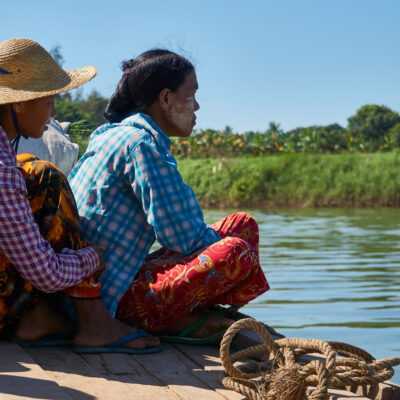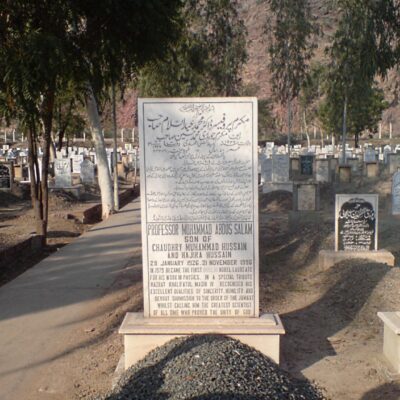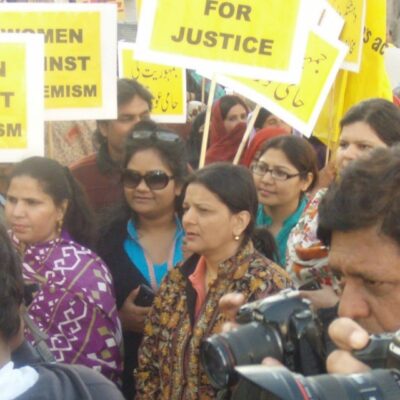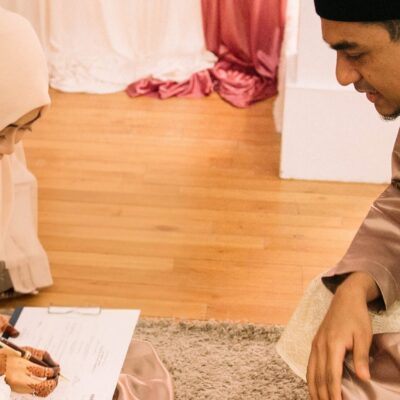This article examines the situation of Muslims in Thailand, a majority Buddhist nation. Most studies about Muslims in Thailand focus on the ongoing 117 year insurgency, or anti-colonial struggle, against the Thai state in the nation’s south and overlook the presence of the majority of the Thai Muslim community residing in the rest the country.
The study of Islam as a religious and identity marker is best understood through the ‘sociolinguistics of Islam’ which explores how language and society intersect with faith in defining the Muslim weltanschauung (worldview). Post-colonial semi-secular states such as Thailand where ethnicities and religions are important identity markers face the challenge of accommodating ethno-religious minorities (just as accommodating religious diversity represented by the presence of the ethno-racial ‘other’ is a major challenge faced by Western democracies). The ethnic, sociolinguistic and religious diversity of Islam in Thailand is reflected in the ethno-linguistic diversity within Thai Islam across the country and also in the duality of its religious discourse conducted exclusively in local Jawi–Malay language in the deep south and exclusively Thai in the rest of the country, as discussed below.
Islam in Thailand
Thailand has the largest Buddhist population in the world and the majority Buddhists constitute approximately 87.2 percent (54.5 million) of the population. The 2022 Census records that Thai Muslims make up approximately 12 percent of the population (approximately 7.5 million). The 1.4 million Malay-speaking majority Muslims of the deep southern provinces of Pattani, Yala, and Narathiwat are about 18.7 percent of the total Thai Muslim population, while the other 6.1 million (81.3 percent) reside in the rest of the country.
Thailand’s Constitution of 2017 states that, ‘The King is a Buddhist and Upholder of religions’ and that, ‘The State should support and protect Buddhism and other religions. In supporting and protecting Buddhism, which is the religion observed by the majority of Thai people for a long period of time, the State should promote and support education and dissemination of dharmic principles of Theravada Buddhism for the development of mind and wisdom and shall have measures and mechanisms to prevent Buddhism from being undermined in any form. The State should also encourage Buddhists to participate in implementing such measures or mechanisms’.
The Thai monarch often intervenes in the political arena to protect and maintain both intra-Buddhist and Muslim-Buddhist harmony. This is the legacy of the late King Rama IX (r. 1946-2016), continued by Rama X (r. 2016 -), as witnessed through their personal participation in matters of religion such as the appointment of the Buddhist Supreme Patriarch, the Muslim Chularajmontri (Sheikhul Islam) of Thailand. Both Rama 9 and Rama X participate in the annual official national celebration of the Maulid, the birthday of the Prophet Muhammad, symbolising the presence of Islam in the Buddha land. The Thai kings have also contributed to the construction of mosques and have implemented development projects in southern Thailand. There are approximately 2,000 mosques in Thailand, about 100 of which are in Bangkok.
Thai Muslim diversity
Islam spread to Thailand from different directions throughout the Malay-Indonesian archipelago and beyond: Yemen (Hadhramawt), Persia, India, Burma, China and Cambodia. Just as in other Southeast Asian Muslim communities, the Thai Muslim community is made up of ‘native/local Muslims’ and ‘immigrant Muslims’. Hence, there is ethnic, linguistic, cultural and political variety within the Thai Muslim community.
Geographically, Thailand is divided into four regions: the south (made up of the deep and upper south); the central plains; the northeast and the north. Thai Muslims are present in all four regions but in different configurations.
The South
Ethnic Malay-speaking Muslims reside in the provinces of Narathiwat, Pattani, and Yala—the deep south. The majority Malay–Muslims of the deep south refer to themselves as orae nayu (Malay Muslim) who speak kecek nayu (local Jawi–Malay language)—distinguishing themselves from the orae siye, ethnic Siamese Buddhists who are a minority in the deep south. The Malay-speaking Muslims of the deep south are offended if referred to as ‘Thai Muslim’ because in their understanding a Malay cannot be anything other than a Muslim and a Siamese/Thai is always Buddhist. They also view term ‘Thai Muslim’ as a sign of forced assimilation by the Thai state. There is an ongoing insurgency in these provinces with on-and-off peace negotiations between the Thai state and the native irredentist Patani nationalist groups. The ethnically Malay but Thai-speaking Muslims of the upper south provinces of Satun, Krabi, Nakorn Si Thammarat, Phangnga, Phuket, and Songkla are migrants from the Malay states of Kedah and Perlis.
The Central Plains
The central rice farming and the agricultural plains along the Chao Phraya River comprise the provinces of Bangkok, Ayutthaya and the Nonthaburi. The population comprises multi-ethnic Thai-speaking integrated Muslims of Cham, Indian, Pakistani, Indonesian, Sri Lankan, Malay, Pathan, and Persian ethnicities. As transcultural Muslims they contribute to the production of Thai language Muslim religious scholarship and discourse. They also contribute to the Bangkok and Chao Phraya religious economy.
The central rice farming and agricultural plains along the Chao Phraya River comprise of the provinces of Bangkok, Ayutthaya and the Nonthaburi. This area is populated by multi-ethnic Thai-speaking and integrated Muslims of Cham, Indian, Pakistani, Indonesian, Sri Lankan, Malay, Pathan, and Persian ethnicities. As transcultural Muslims they contribute to the production of Thai language Muslim theological scholarship and discourse as well to the Bangkok and the Chao Phraya religious economy. In the deep south religious scholarship and discourse is shaped and expressed by the Jawi-Malay tradition. After reading an English translation of the Qur’an, the late King Bhumibol (Rama 9) personally commissioned the then Sheikhul Islam (Chularajmontri) to prepare a direct Thai translation of the original Arabic version so that copies could be distributed to all parts of the Kingdom.
The Northeast
Islam has a tiny presence in this region made up of the Khon Kaen, Kalasin, Sakon Nakorn and Udon Thani provinces. Thai Muslims here are immigrant Pathans from Pakistan-Afghanistan brought as soldiers by the British. They are conversant in Thai and Pashto languages.
The North
Indian, Bengali and Chinese Muslims arrived in the north of Thailand via Myanmar between the 1870s and 1890. The Chinese (Haw) Muslims are the most economically developed section of the Thai Muslim community. They fled religious persecution from the communists in China and the nationalists in Myanmar.
Thai Muslims see themselves as part of an integrated Thai polity
Relations between the monarchy and Thai Muslims are based on loyalty to the Buddhist monarch of the kingdom. This article illustrates that ethno-linguistic, cultural diversity among Muslims of Thailand across the country in different provinces is the result of different historical and migratory factors, yet all are citizens of Thailand.
Integrated Thai Muslims do not address the unresolved historic and political issues between the Malay-speaking Muslims of the deep south and the Thai state because it is matter of autonomy between them and the state as well as an outcome of the Anglo-Siam Treaty of 1909 and its political aftermath. The insurgency in the deep south is a nationalist, rather than a religious, matter. It is similar to the ongoing ethno-nationalist insurgencies in neighbouring Buddhist-majority post-colonial Myanmar (Burma) and the Catholic-Moro conflict in the Philippines.
Management of Islamic affairs in Thailand
As seafarers, Persians, Arabs and other Muslims first travelled and settled in the Kingdom of Siam around the 9th CE. An insightful account of this is that of the embassy of the Safavid Empire (1501 to 1736 CE) sent to the Siam kingdom of Ayutthaya (1351 to 1767 CE). The Persians played an important role in the politics and economy of Siam until the arrival of the Portuguese and the Spanish in Ayutthaya in 1511 (CE). A Greek adventurer Constantine Phaulkon played a significant role in endearing King Narai (r. 1656-1688) and reducing the role of the Persian Muslims at the royal court.
King Phrachao Songtham (1620-1628) appointed the Persian Shia scholar Shaykh Ahmad Qomi (1543-1631) as the first Chularajmontri or Shaykh al-Islam of Siam. Shaykh Qomi also served as the King’s Minister of Foreign Trade and was entrusted with the task of managing Muslim community affairs. The first 13 Chularajmontris of Siam were Shia Muslims.
The 1932 democratic revolution transformed Siam into Thailand as a constitutional monarchy and, along with the incorporation of the Malay kingdom of Patani in 1909 into Siam, Islam became the largest minority religion. The new state passed the Patronage of Islamic Act of 1945 to help resolve tensions in the deep south by integrating processes of the southern Malay Muslim provinces into the Thai nation. The Act established the office of the Chularajmontri/Sheikhul Islam and the Provincial Council for Islamic Affairs. Since 1945, all six Chularajmontri (including the current one) have been Sunni Muslims.
Muslim education in Thailand
Thai Muslims view educational institutions as the bastions for preserving their religious and ethno-linguistic identity. There are some 200 Muslim schools which offer both general and religious education. There are four types of Muslim educational institutions in southern Thailand established by the southern Malay-speaking Muslims:
- Pondok—traditional residential religious madrasa-type schools. The Pondoks have played a formative role in the preservation and educational development of the Malay Muslim identity in the deep south. The Pondok curriculum includes predominately religious subjects and is therefore not recognised by the Thai government. Many pondok graduates go to the Middle East to further their education and set up their own pondoks when they return. In 2004, the government of then Prime Minister Thaksin Shinawatra initiated the policy that all pondoks should register themselves with the government, which was met with resistance by some who preferred to disband rather than register themselves, fearing government interference. Some continue to operate and are considered as essential for preserving Malay-Muslim identity.
- Tadika—Islamic kindergarten These kindergartens were initially attached to mosques but are now under management of the Department of Local Administration in Pattani, Yala, and Narathiwat provinces.
- Rong Rian Ekkachon Son Sasana—Islamic Private Schools. Historically Malay Muslims preferred to send their children to the traditional pondoks to obtain religious education only and not to government schools where the medium of instruction was in Thai and included the study of Buddhist ethics. Pattani Muslims refrained from sending their children to government schools fearing that future generations would lose their Malay ethno-religious identity and so appealed to the government to be allowed to establish their own Rong Rian Ekkachon Son Sasana.
- Public and Private Universities—There are two public universities in the deep south which cater for the educational development of southern Malay Muslims: the Faculty of Islamic Science at the Prince of Songkla University, Pattani Campus; and the Princess of Naradhiwas University and its colleges established in 2003 in the Narathiwat province. There is also a private Islamic university called Fathoni University founded in 1998 which offers both Islamic and general higher education and is supported by financial benefactors from Saudi Arabia, Kuwait, Qatar, and others.
Thai Muslims on the political stage since 1932
Since the transformation of Siam into Thailand as constitutional democracy in 1932 there have been many decades of coups and other political upheaval. Thai Muslims have used the political stage to attain, maintain, and strengthen their ethno-religious identities and cultural rights.
Some Thai Muslims were members of the Khana Ratsadon (People’s Party) led by Pridi Phanomyong (1900–1983) which transformed Thailand into a constitutional monarchy. Muslims also joined the underground Seri Thai (Free Thai) Movement which resisted Japanese occupation during the Second World War. Two prominent Muslim participants in these two movements were Chaem Phromyong (1910–1989) and Banchong Sicharun, both of whom were close associates of Pridi Phanomyong who became Prime Minister in 1946. Pridi appointed Chaem Phromyong as the first Chularajmontri under the Islamic Patronage Act of 1945. Chaem Phromyong held the office of the Chularajmontri for two years (1945–1947) before fleeing with Pridi to China following the military coup led by Phibun Songkram (1948–1957).
The first Thai Muslim to be appointed to the Thai cabinet since the establishment of the era of constitutional monarchy was Phya Samantharathaburin, also known as Tui Samantharath or Bin Abdullah (1871–1963), from Satun province in southern Thailand. Another prominent Muslim to be appointed to the cabinet was Che Abdullah Langputeh (1898–1986) also from Satun province. He became a member of the Thai parliament for five terms between 1943 and 1973 and held several ministerial portfolios. He was known as a pragmatist who advised the Thai government to be sensitive to cultural diversity if it really wanted to solve the problem of the southern insurgency.
Among the founders of The Democrat Party in 1945 was Lek Nana, a prominent Thai Muslim businessman from Bangkok. He too held several portfolios between 1975 and 1988. The most famous and internationally-renowned Thai Muslim politician of the Democrat Party was Dr. Surin Pitsuwan (1949–2017), who was of Malay descent from Nakorn Si Thammarat. First elected to Parliament in 1986 he was returned eight times. He served as the Deputy Foreign Minister between 1992 and 1995 and was the Minister of Foreign Affairs between 1997 and 2001. In January 2008, Dr. Surin was appointed as the Secretary General of ASEAN (the Association of Southeast Asian Nations).
In the deep south, Den Tohmeena (1934–) of Pattani province, the son of the famous Pattani scholar Haji Sulong who disappeared in 1954, was elected to Parliament seven times since 1976 and once as a Senator. He served as the Deputy Minister of Public Health in 1990–1991 and as Deputy Minister of Interior between 1992 and 1995.
Den Tohmeena and Wan Muhammad Nor Matta from the deep south founded the Wadah political faction in 1988 to address developmental issues facing the Malay-speaking Muslim community. Nor Matta has held many political and ministerial posts in the governments led by Thaksin Shinawatra.
In 2004, there were clashes between Malay Muslims and Thai state authorities. On April 28 at the Krue Se Mosque an army raid left 32 dead and the Takbai massacre on October 25 resulted in the death of 85 Malay Muslims in the Narathiwat province the Wadah faction. The government remained silent and as a result it failed to be re-elected.
In the present unstable political situation, Wan Muhammad Nor Matta was appointed as the compromise choice for Thailand’s House Speaker. Currently, there are 13 Muslim MPs representing both Muslim and mixed constituencies. Nor Matta’s Prachachart party have seven MPs of Malay descent in the current parliament.
Multicultural citizenship to foster peace and harmony
Islam in Thailand has varied socio-linguistic, theological and cultural expressions across the country and Thai Muslims and Buddhists have been co-existing for centuries. Over past decades, Thai Muslims and Buddhists have come to understand and recognise each other as the citizens of one country. There is certainly an unresolved ethno-religious political situation in the deep south and it is hoped that the state will meet the demands of Malay Muslims there. This would contribute to building stability, democracy and inter-cultural dialogue between Islam and Buddhism and counter rising anti-Islam sentiment in Thailand. This challenge has to be addressed with a multicultural approach.
Thai Muslims are integrated within Thai polity, they are proud of their national identity and relish the religious freedom they enjoy in a Buddhist kingdom. The most pressing need is that the state and Thai Muslims both work for mutual recognition of cultural diversity within the country. This would contribute towards peacebuilding fit for an age of religious pluralism.
Imtiyaz Yusuf is Professor of Islam and Dialogical Studies, International Institute of Islamic Thought and Civilisation (ISTAC-IIUM), Kuala Lumpur, Malaysia and Non-Resident Research Fellow, Center for Contemporary Islamic World (CICW), Shenandoah University, Winchester, USA.
Image: A woman runs a halal food stall in Bangkok. Credit: UN Women Asia and the Pacific/Flickr.




